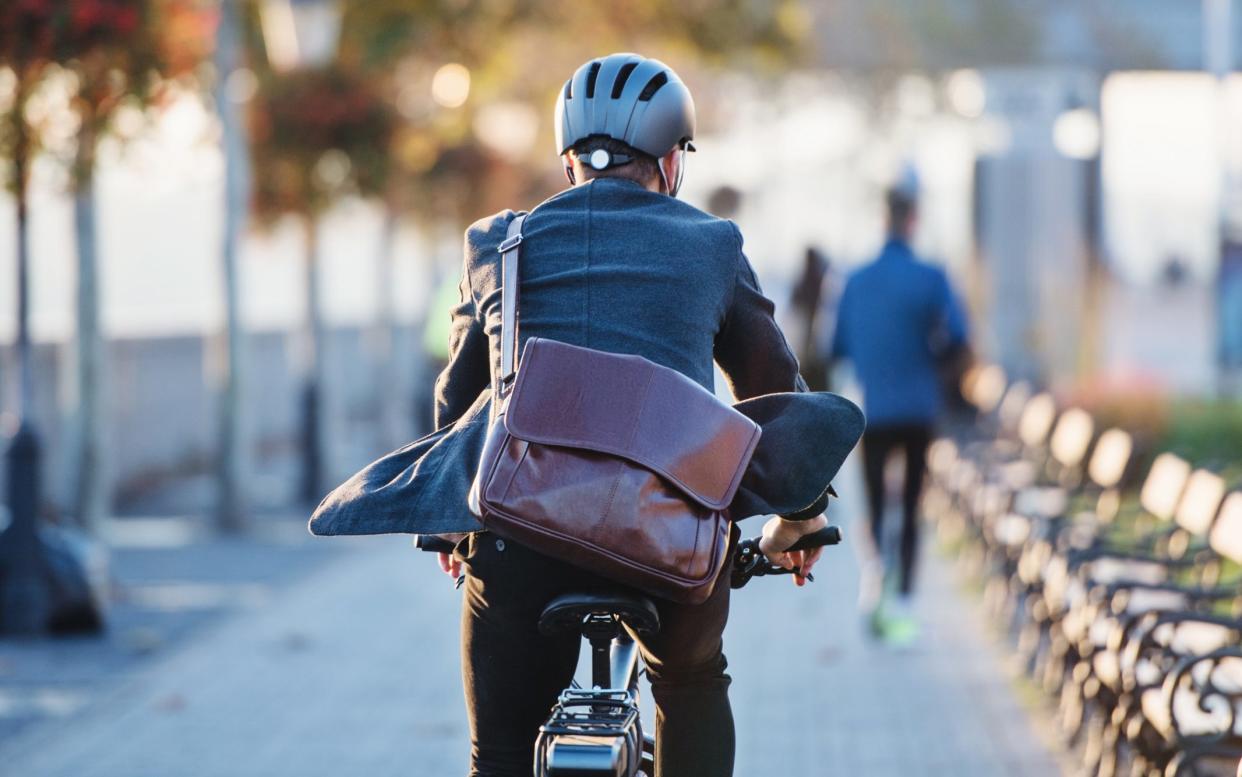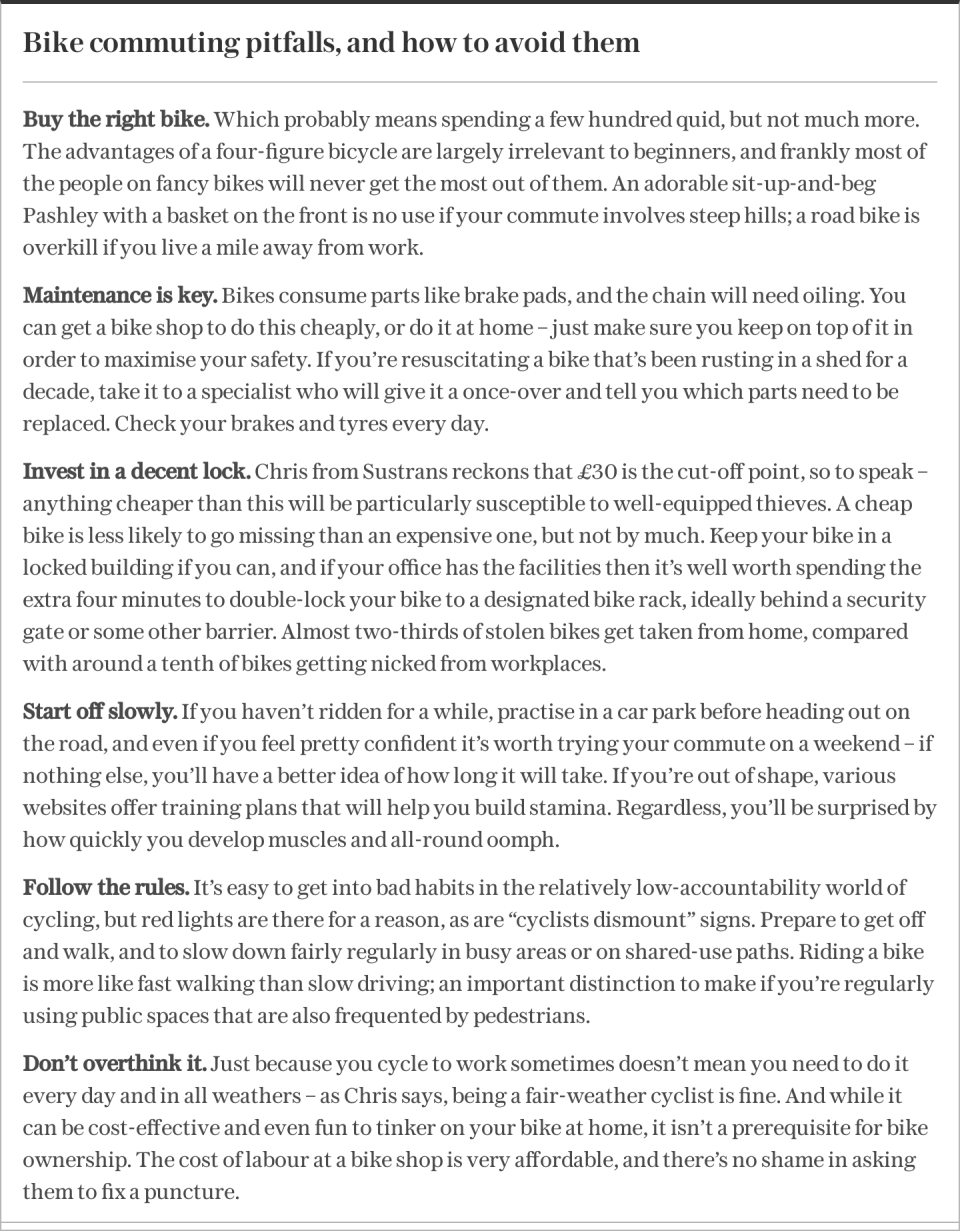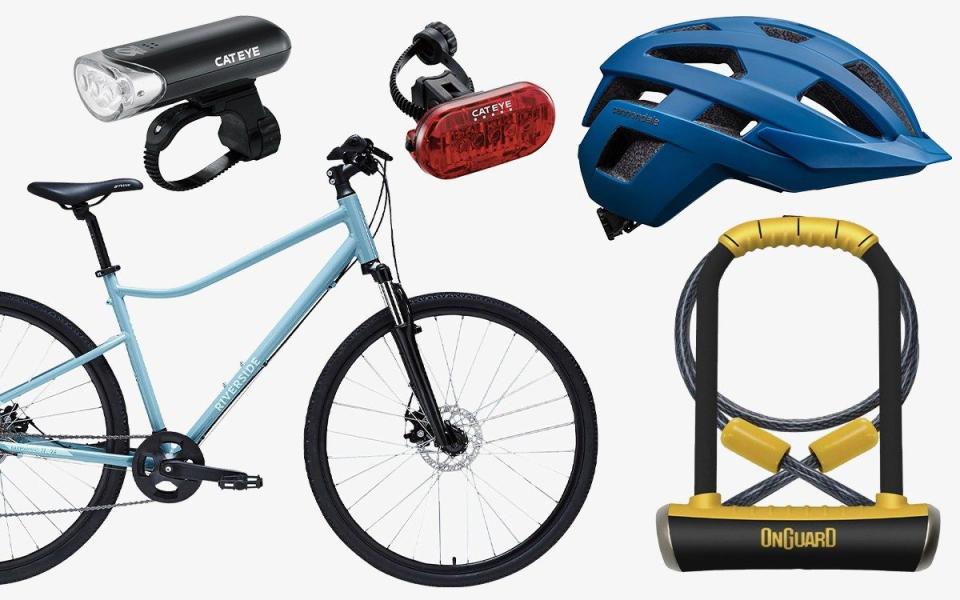How to start cycling to work – without completely hating it

With petrol prices soaring, trains bedevilled by strikes and delays, and the cost of a ticket going ever upwards, commuting by car or rail has never been less attractive.
And yet 12.5 million of us still drive to work, 1.2 million take the bus, and one million take the train, while only 530,000 of us choose to commute by bike.
Why?
“Some people live too far away, others don’t have a safe route,” explains Chris Bennett, head of behaviour change at the sustainable transport charity Sustrans. “But lots of people do live close enough – they just haven’t really considered it.”
Which is understandable. On paper, cycling sounds like a slower, colder, wetter and more dangerous way to get around than using a car. But in practice, bike commuting delivers significant advantages over any other mechanised form of transport, and the quid pro quo of that exposure to the elements is improved fitness, mental health and energy levels.
“One of the biggest barriers is habit,” says Bennett. “People are used to how they get around, and after a while, you just think it’s fine to sit in traffic for 40 minutes at the start of every day.
“It’s easy to forget that we could be arriving at work feeling much more alert, having fitted a lot of physical activity into the day already. For so many people, it’s just about giving that a try.”
Here is how to make that change...
The bike
Although those on very tight budgets can find new bikes online for around £150, or second-hand ones of potentially dubious quality and origin for half that, most newcomers should expect to spend at least £300 or so to purchase a bike from a reputable retailer or a local cycling shop. Spend a little more (say, £750) and you’re very likely to come away with a high-quality item that, if maintained correctly, will last decades.
It’s better to try bikes out in person rather than just ordering one – yes, you can get a cheap bike on the internet, but you’ll need to assemble it yourself (a rigmarole) and it might not even fit you properly.
Riding even a slightly too big or too small bike can be surprisingly irksome, so it’s worth going to a bricks-and-mortar shop like Decathlon or an independent in order to chat to staff and try bikes for size. And while it’s possible to get lucky on the second-hand market, you’re better off buying a used bike in a shop than from a random bloke on Gumtree.
But what sort of bike do you need? The most versatile style of bike, and a decent catch-all for new riders, is called a hybrid: a cross between a sporty road bike and a mountain bike, that allows for a reasonably brisk pace on flat ground while offering enough gears for steep hills. Decathlon’s Riverside 500 is a good example of the breed, costing £350 new and likely to be the only bike you’ll really need.
If your commute is short and flat, then a Dutch-style city bike (which tend to have swept-back handlebars, an upright riding position and sometimes just three gears) might be appropriate, though I wouldn’t want to tackle a commute of more than two miles, or any hills whatsoever, on these tank-like machines.
If you need to cover a longer distance then consider a road bike but prepare for a potentially unrelaxed riding experience in comparison with a hybrid. And folding bikes offer an enjoyable and effective way for rail commuters to reach their nearest station without driving, albeit at the cost of the riding experience.
Pretty much all bike types are available as e-bikes, but hybrids and town bikes dominate the battery-assisted market. Prices for these start at around £1,000 and rapidly increase from there. The Raleigh Array is a good example of an entry-level e-bike, costing some £1,200, which delivers a motorised boost in addition to your pedalling. Whether this significant price increase is justified will depend on your commute – if you’re cycling on flat terrain, or if your journey is under a couple of miles, there’s probably no advantage in riding an e-bike, but if your route to work involves hills then an e-bike will vastly improve your cycling experience.
“It’s not cheating to ride an e-bike,” says Bennett. “If your commute involves a big hill, you’re far more likely to actually use the bike if it has electric assistance.”
The kit
Once you’ve got a bike you’re basically ready to go – you can ride away from the shop and begin your new life on two wheels. But most responsible riders will purchase additional gear to enhance their safety, and after riding to work for a couple of days you might find yourself hankering for more comfort-oriented accessories to fit to your bike as well.
You’ll certainly need lights if you’re commuting outside the summer months. The cheapest set – a white LED to the front, red for the rear – will cost a few quid online but aren’t really up to serious night-time road use, really. Expect to spend about £25 on a set if you commute predominantly on the public highway, and adjust them correctly. Some people choose to wear bright or otherwise noticeable clothing, which can be a special cycling jacket, a fashion piece with reflective elements, or just a plain old high-vis vest. But beyond that, special clothing isn’t really that important.
“A lot of people are put off by the fear of having to get into lycra,” says Michelle Jakeway from British bike manufacturer Raleigh. “And from our perspective, that’s really not what cycling is about.
“We have over a century of experience introducing people to cycling. It’s very inclusive, and a great way to experience some freedom.”
However, while clothing choices may not be that important, a helmet is. Whether or not you should wear one in cycling lanes remains a peculiarly divisive issue, but outside them it’s a no-brainer – a helmet reduces the likelihood of serious head injury by over two thirds worldwide, and halves the risk of less-serious (but still unpleasant) head injury. Cycling is statistically pretty safe, but a helmet makes it safer.
Apart from that, you’re basically good to go. If you plan to go out in very cold weather then a number of thin, removable layers are better than one thick one, and you can buy a cheap rain jacket from Decathlon. But many people who cycle, especially at slow speeds or over short distances, do so in normal-person clothes.
The knowledge
You heard it here first – riding a bike is different to driving a car. But the differences are a lot less burdensome than you think.
“Traffic jams aren’t as much of a problem on a bike,” says Bennett. “You can often just ride past them, or you can find a more direct route.
“A lot of the stress is taken away from the commute. If you drive to work, you sometimes get held up by problems for half an hour. On a bike it’s much more predictable. If your commute takes 25 minutes, it’ll always take 25 minutes.”
A first-time bike commuter should – after having an inaugural wobble around a car park or empty space – practise their route to work on the weekend before trying it for real. Bike route maps are available online, on apps like Komoot and on the Sustrans website.

If you have an experienced cyclist friend, they will probably be happy (possibly overbearingly so) to accompany you, and may have some local advice on route planning. And if it’s been a while since you did a proper ride, build your stamina with leisure rides before tackling rush hour.
The rest of the knowledge you’ll pick up as you go. Soon you’ll want to buy panniers instead of using a rucksack when you go shopping; I’ve been using a bread crate and cable ties for years, but inexpensive luggage is available for around £50. And if your bike doesn’t already have them, mudguards are a useful accessory if you plan to ride in the wet. But that’s up to you – many sensible bike commuters will opt for another form of transport on gloomy, soggy days.
“You don’t have to cycle if it’s raining or cold,” says Bennett. “There’s no shame in being a fair weather cyclist.”
A beginner biking starter pack for less than £500

Decathlon Riverside 500 (£350, decathlon.co.uk): A decent bike from a reputable retailer will cost from £300. Avoid the very cheapest bikes and dodgy Gumtree deals.
Cateye lights (£27, wiggle.com): You can tide yourself over with a £5 set of LEDs, but commuting at night necessitates spending a bit more.
Canondale helmet (£45, evanscycles.com): Spend much more than £50 and you’re probably buying a brand. Any MIPS-equipped helmet that fits you should do the job.
OnGuard Pitbull lock (£30, tredz.co.uk): Spend at least £30 on a good lock, with a high security rating from a reputable scheme. In an ideal world, get a couple to deter thieves.
Total: £452

 Yahoo News
Yahoo News 
